75 Valentine’s Day facts - ready for when your kid fires all kinds of questions at you
Impress your little ones with your expert Valentine's Day knowledge while improving theirs


We have found a whopping 75 Valentine's Day facts, for when your kids ask all the questions about the day - and they will.
A child's curiosity is unbeatable, and their minds soak up answers to their rapid fire questions like fabulous little sponges. Finding amazing facts for kids to feed their thirst for knowledge can be a fun challenge, while riddles for kids can get everyone head-scratching. Even dad jokes can get the family not just laughing together, but help little minds understand the concept of humour.
Mum-of-two Lucy tells us "When my children made Valentine's Day cards at school, they were full of questions about why exactly they were sticking hearts onto paper. Facts about the day helped them learn more about it."
We've covered everything from the possible origins of the day, to how its celebrated around the world. We've also delved into which gifts are the most popular, and exactly who popularised certain presents as we know and love them today. Happy learning...
Valentine's Day facts
- There are two theories about Valentine's Day origins - one is that the day derives from the Roman festival Lupercalia. Held between February 13-15, the events that took place at the festival were hoped to improve fertility and became associated with being a couple.
- The second theory suggests two men named Valentine began the tradition. Roman Emperor Claudius II forbade young men to marry while trying to build his army, accusing women of being a distraction. The first Valentine defied the ban and continued to perform secret marriages - he was executed for his crimes on February 14 in roughly the year 270 A.D.
- The second Valentine is thought to have been killed for attempting to help Christians escape prison in Rome. When imprisoned himself, it's thought he sent the first ever Valentine's card - a message to himself, signed "From your Valentine." The combined antics of the Valentines were thought to have originated the celebration.
- As the legend of Valentine was passed through history, it became customary for lovers to exchange notes and mementos on February 14, repeating the original signature "From your Valentine."
- Nobody knows which one of the Valentine's Day origin theories is real, if any.
- In 496 A.D., it was Pope Gelasius I who made the feast of St. Valentine an official holiday.
- The celebration didn't become associated with romance until the Middle Ages. This is thought to stem from French and English beliefs that birds began their mating season on February 14.
- The idea of birds mating on February 14 originated from Geoffrey Chaucer's poem "The Parliament of Fowls," published around 1381 - 1382. In the poem, he alludes to birds choosing mates on Valentine's Day, altering the connotations of the holiday to one of a romantic nature.
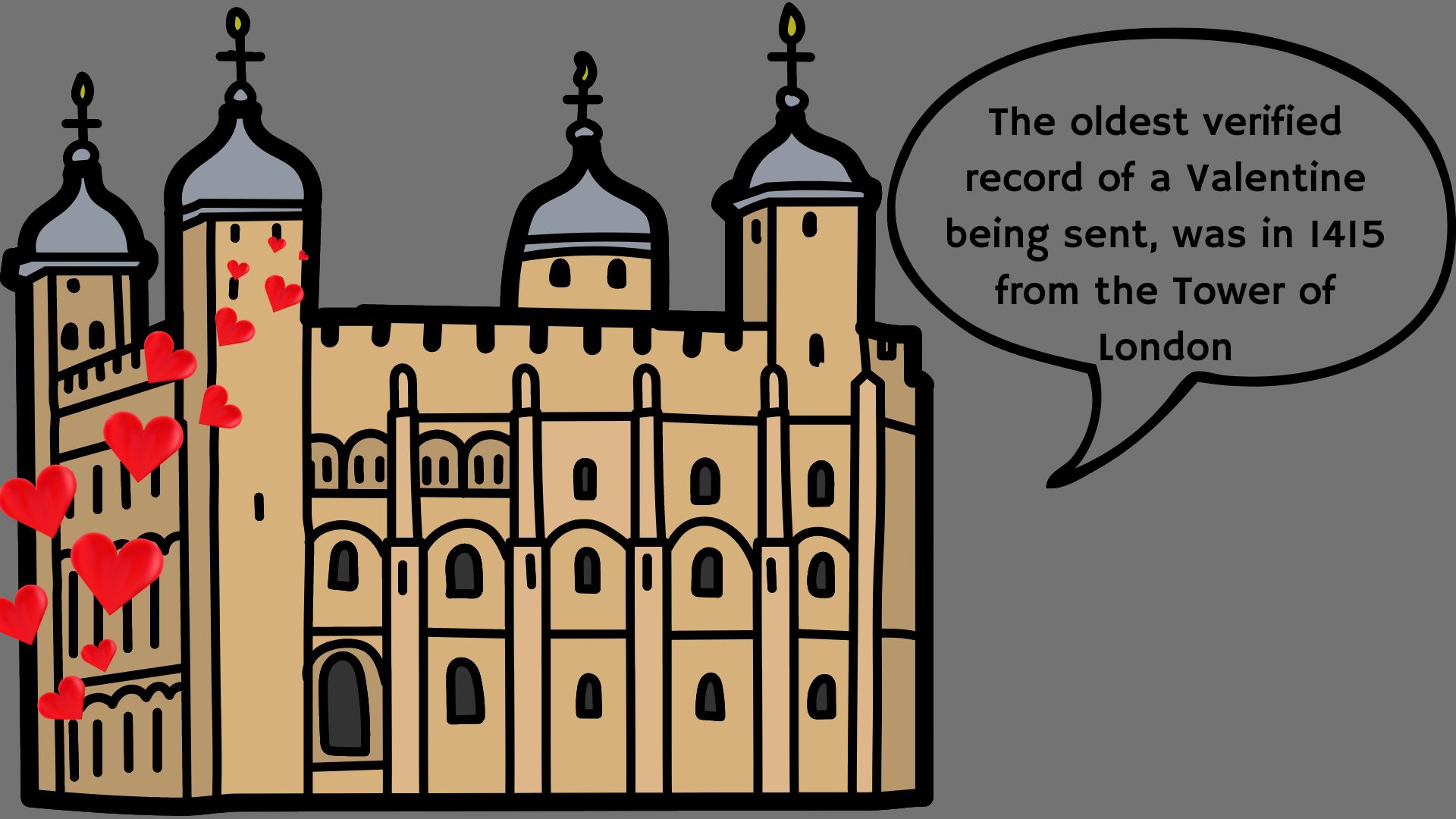
- The oldest verified record of a Valentine being sent, was in 1415. A French duke named Charles sent a poem to his wife while imprisoned in the Tower of London at the tender age of 21.
- A line of the poem read "I am already sick of love, My very gentle Valentine."
- The phrase "Wearing your heart on your sleeve" also derives from the Middle Ages - during this period, men and women drew names to see who their Valentine would be for the Roman festival Juno. They would pin the name to their sleeve to show the identity of their love interest for the coming year, quite literally wearing their heart on their sleeve.
- The use of "X" as a kiss when signing off also derived from the Middle Ages. Many people used X as a signature anyway as they couldn't write. At the time, Christians kissed statues of Christ and the X evolved into a sign off that was both a signature and a kiss.
- In 1537, King Henry VIII declared February 14 as the official holiday of St. Valentine's Day by royal charter.
- In 1969, Pope Paul VI removed St. Valentine's Day from the calendar of major holidays, because it was so difficult to verify anything about the actual St. Valentine.
- Despite being removed from the official calendar of major events, its religious observance is still permitted.
- In the 1700s, English women would pin five bay leaves to their pillows on the evening of February 13. Placing one in the middle and on each four corners, they believed this would induce dreams about their future husbands.
- The tradition of giving flowers on Valentine's Day flowers began in the 17th century. When King Charles II of Sweden learned the the specific meanings of different flowers on a trip to Persia, he introduced the tradition of offering flowers as a Valentine's gift in Europe.
- Victorian England embraced this tradition fully, and giving red roses was the most popular choice by far.
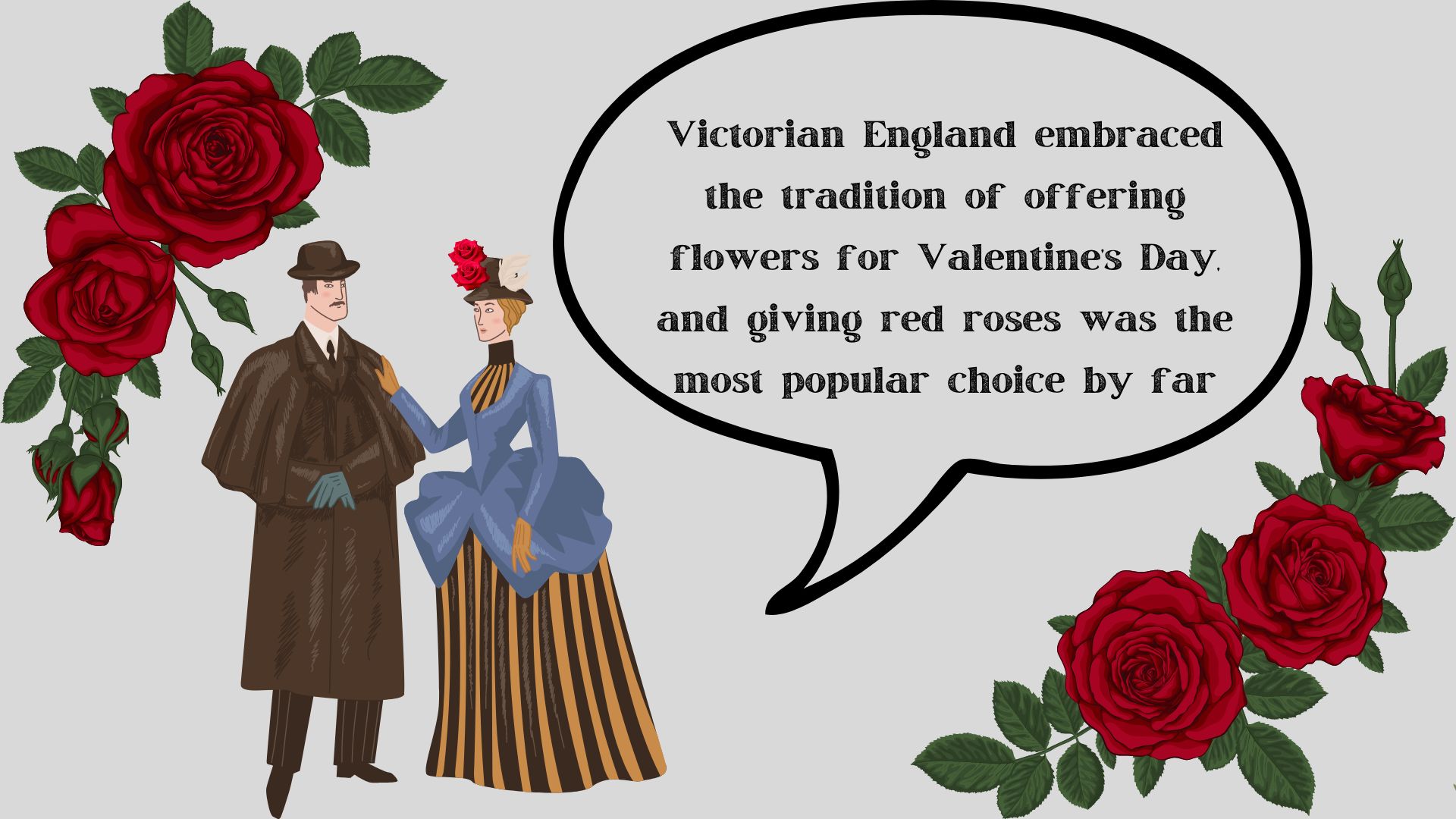
- Red roses symbolise romance and passion.
- Although red roses are predominantly given on Valentine's Day, other rose colours are perfect for the occasion, with white roses symbolising loyalty and respect.
- Purple roses are great for a Valentine, as they mean "Love at first sight."
- Pink roses have multiple meaning, but gratitude and desire are some that make for great Valentine's symbolism.
- Yellow roses were previously thought to indicate jealousy and infidelity, but in modern times now hold meanings relating to strength, gratitude and friendship.
- Over 250,000 roses are grown in time for being given as Valentine's Day gifts.
- Victorians were also responsible for beginning the trend of sending "Vinegar Valentines." These were cards containing sometimes cruel words or pictures, to predominantly ward off unwanted suitors.
- Vinegar Valentines were also sometimes sent to landlords, employers, or someone known to have cheated or lied.
- The cruel cards were often sent under the cash on delivery method, meaning the recipient would even have to pay a penny to read them.
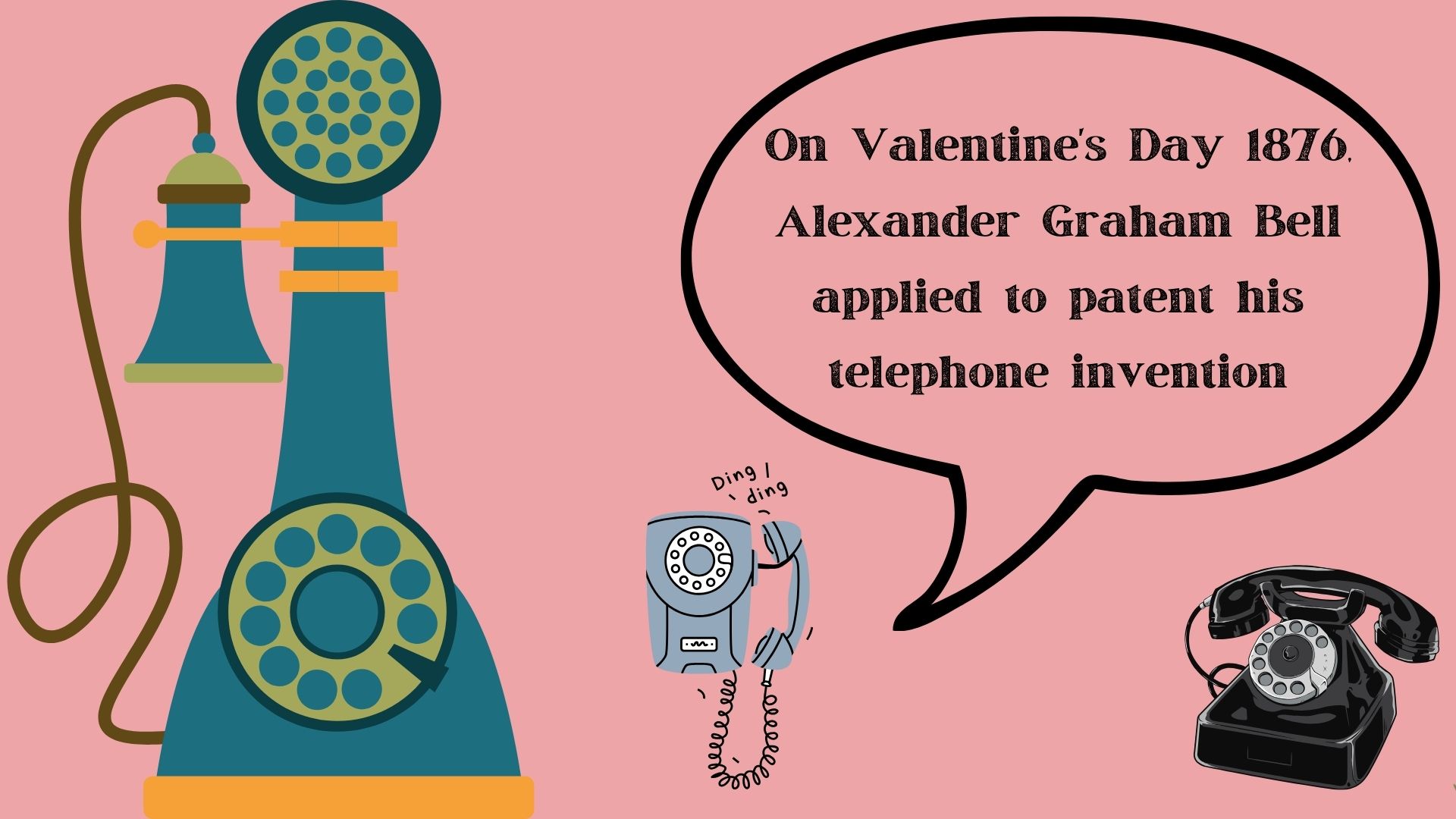
- Victorians popularised sending Valentine's cards so much, postal workers of the era were given special meal allowances in the run up to February 14, to keep them going through the rush.
- On Valentine's Day in 1876, Alexander Graham Bell applied to patent his telephone invention.
- Inventor Elisha Gray applied for a patent for a similar invention from the same office on the same day, but Bell received patent approval first.
- By the 19th century, booklets were available to help people pen the perfect Valentine's message.
- In modern day UK, 25 million Valentine's Day cards are sent every year.
- Also by the 19th century, Cupid symbols formed an integral part of the Valentine's day imagery that endures today.
- Back in 700 B.C., the original Cupid was the Greek god of love named Eros. He was a handsome man with the ability to make people fall in love and was the son of Aphrodite.
- It was the Romans who altered the image of Eros to that of a cute child holding a bow and arrow, renaming him Cupid. They also believed Cupid to be the son of Venus.
- British chocolatier Richard Cadbury introduced the concept of giving chocolate as a Valentine's gift in 1861, beginning by selling his products in heart-shaped boxes.
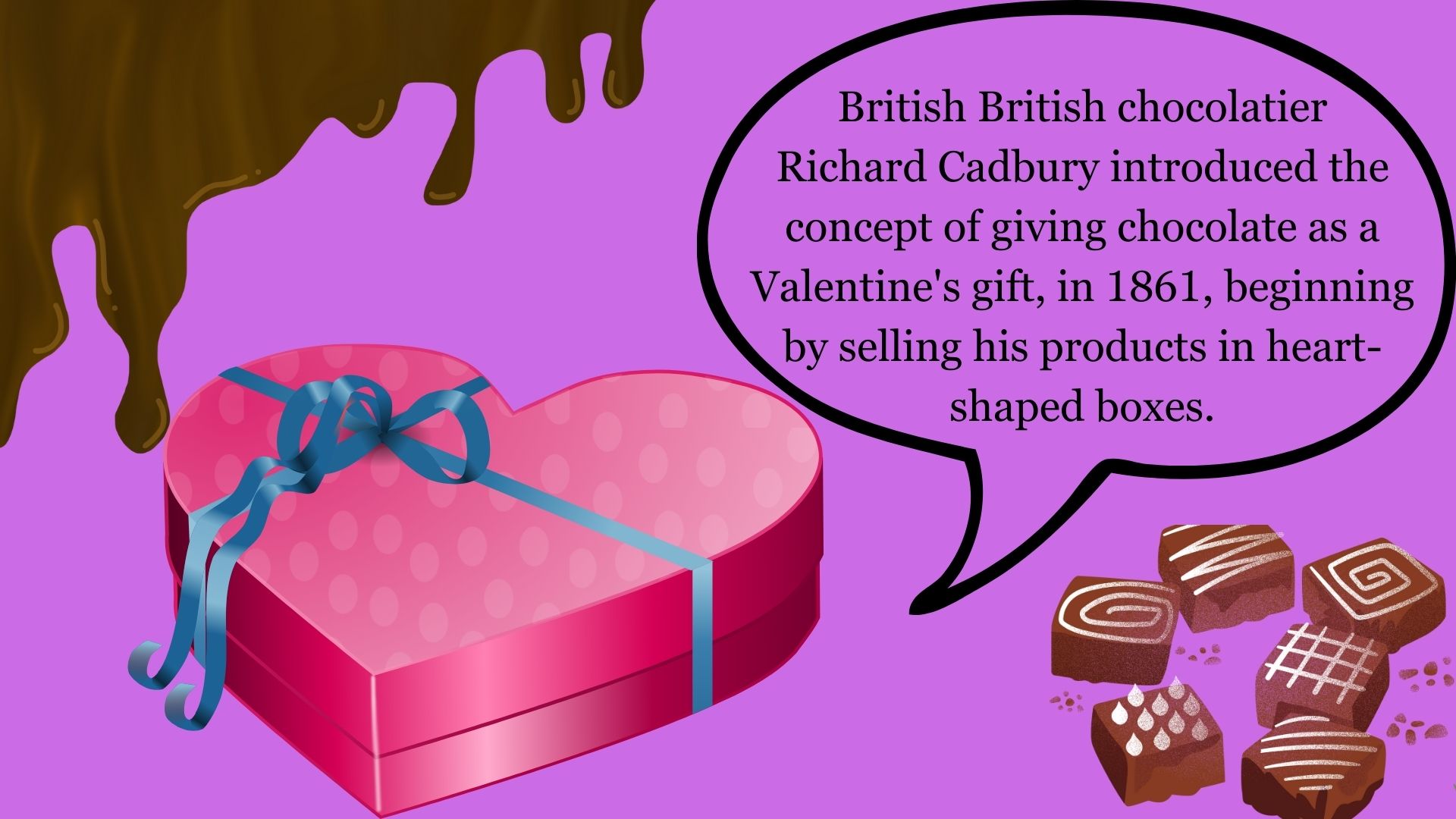
- The boxes were also designed as keepsakes and to store special trinkets inside, giving them a further unique selling point.
- Today, chocolate is the most popular Valentine's gift in the UK, after sending a card.
- Chocolate releases four chemicals when consumed; endorphins, serotonin, dopamine, and oxytocin. All are associated with increasing happiness levels.
- Lindt is the second most popular chocolate in the UK, but the most searched in the run up to Valentine's Day.
- Love Hearts became a popular Valentine's confectionary following their introduction in 1954.
- Love Hearts are actually an updated version of Victorian Era Conversation Lozenges.
- Conversation Lozenges began life when a Boston pharmacist named Oliver Chase altered the way medical lozenges were made by creating a new machine to make them with.
- Chase inadvertently made America's first candy-making machine, and formed the New England Confectionery Company, or Necco, instead of continuing in pharmaceuticals.
- In 1866, Oliver's brother, Daniel Chase, started printing cute messages on the Necco sweethearts. The company's heart-shaped candy are similar to the Love Hearts we have today in the UK.
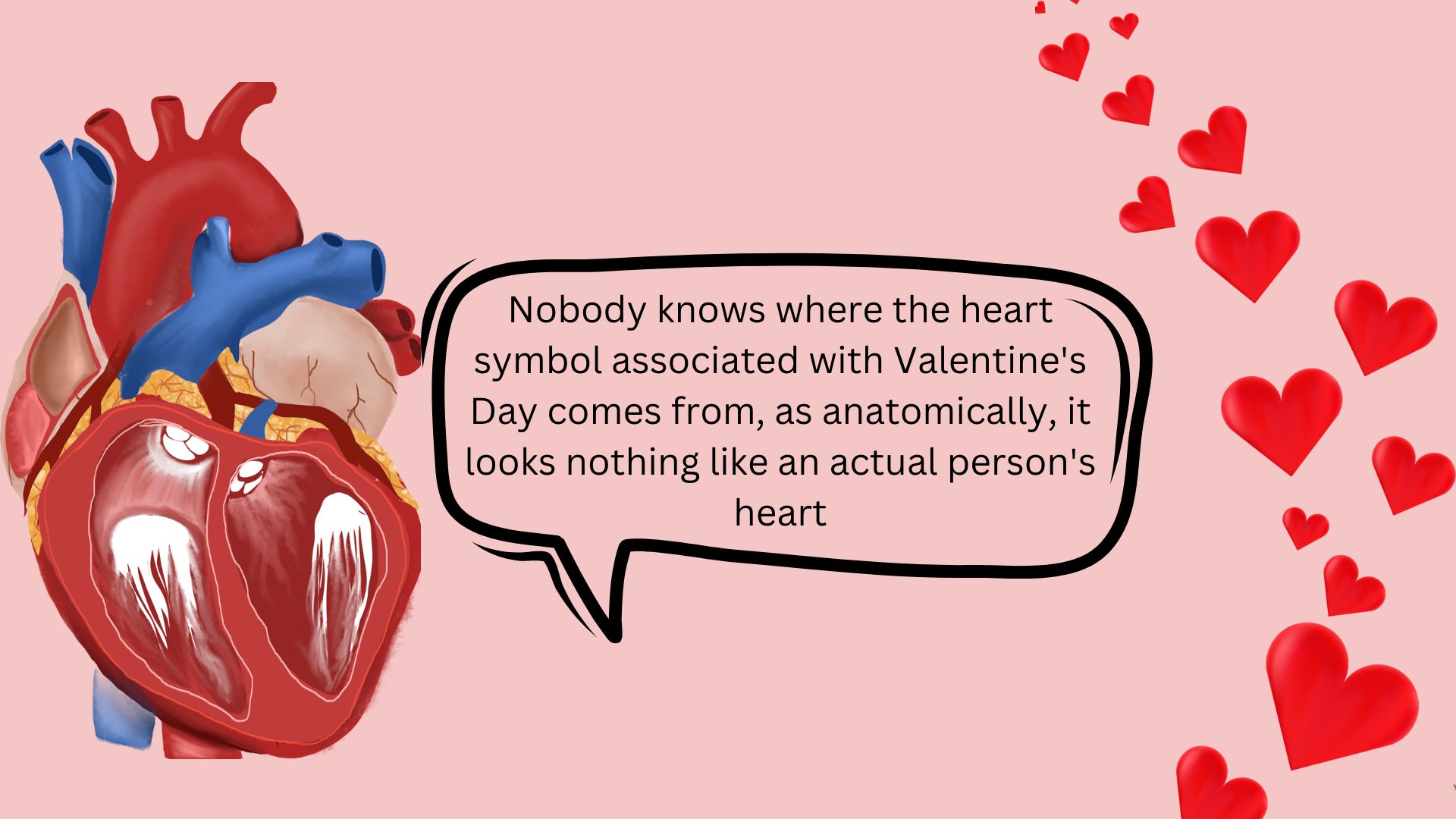
- Nobody knows where the heart symbol associated with Valentine's Day comes from, as anatomically, it looks nothing like an actual person's heart.
- Some people believe it comes from the shape of the ivy leaf, a plant typically associated with fidelity.
- Other's believe it symbolises the more rounded parts of human anatomy, such as breasts and buttocks.
- Some think that when the first animal dissections found bird and reptile hearts to be closest to the heart shape, humans believed all hearts were that same shape and derived the typical Valentine's heart as a symbol of love based on this information.
- After chocolate, jewellery is the second most popular Valentine's gift.
- The tradition of giving jewellery really took off in the mid 1800’s with the industrial revolution - the invention of the metal press allowed mass production of jewellery which was previously only something for the rich and upper classes.
- By the 1920’s realistic imitation jewels were produced, with high profile designers making costume jewellery acceptable. Giving such jewellery as a present was at this time made easier for many who could previously not afford it.
- Valentine's Day is the second busiest day for restaurants in the UK, the busiest being Mother's Day.
- For those cooking at home, steak recipes are the most-searched.

- Traditional Valentine's foods include herbs, honey and strawberries.
- Basil, lavender and rosemary were the three most popular Valentine's herbs. Basil is a traditional symbol of fertility, lavender is relaxing and thought to be an aphrodisiac. Rosemary has a long association with love, often forming part of wedding bouquets bouquets during the Middle Ages.
- Honey was traditionally popular because bees symbolised love with the sweetness of their honey, and the bitterness of their sting.
- The red colour of strawberries drew parallels with hearts, and they're also the symbol of Venus, the Roman goddess of love.
- Many choose to include pets in their Valentine's celebrations, with UK residents collectively spending upwards of £27 million on pets each year.
- Overall, the UK spends around 1.3 billion per year on Valentine's Day.
- Londoners spend the most on the day than any other area.
- Generation Z spends the most, followed by millennials, then generation X, then baby boomers.
- Around 25% of UK residents will treat themselves to a present, rather than rely on someone else to get them something.
- Men generally spend more on gifts than women.

- Despite the big spending, approximately half of the UK suggest they don't celebrate Valentine's Day.
- Valentine's Day is the second most popular time to get engaged, after Christmas.
- Despite this, around 30% of people believe getting engaged on Valentine's Day is a cliche.
- Teachers receive the most Valentine's Day cards annually.
- Valentine's Day wasn't introduced to Japan until 1936, and only properly took off there in the 70's.
- Only women buy chocolates and gifts for their loved ones on February 14 in the Japanese celebration.
- However, Japan has a separate celebration on March 14 named White Day, when men buy gifts for their partners.
- Finland's Valentine's Day is called Ystävänpäivä and friendship is celebrated as well as romantic love - gifts are given to friends and family members as well as partners.
- Estonia has the same celebration as Finland, and calls it Sõbrapäev.
- In Ghana, Valentine's Day is called National Chocolate Day! It's designed to boost the domestic consumption of Ghanaian chocolate and cocoa products, alongside the celebration of Valentine's Day.
- Every year, thousands of Valentines are sent to the city of Verona in Italy, addressed to Shakespeare's Romeo and Juliet. They're read by volunteers who award the "Cara Giulietta" (Dear Juliet) prize to the most romantic letter.
We've rounded up the best flower delivery services, and check out our guide to the best Valentine's gifts for him this year, for all the inspiration you need. If you're buying Valentine's gifts for kids, we have the lowdown on the greatest ones out there, for all ages. Once the gift is bought, what to write in a Valentine's Day card is the next step - our top tips and templates will turn you into the perfect wordsmith.
Parenting advice, hot topics, best buys and family finance tips delivered straight to your inbox.

Lucy is a mum-of-two, multi-award nominated writer and blogger with six years’ of experience writing about parenting, family life, and TV. Lucy has contributed content to PopSugar and moms.com. In the last three years, she has transformed her passion for streaming countless hours of television into specialising in entertainment writing. There is now nothing she loves more than watching the best shows on television and sharing why you - and your kids - should watch them.